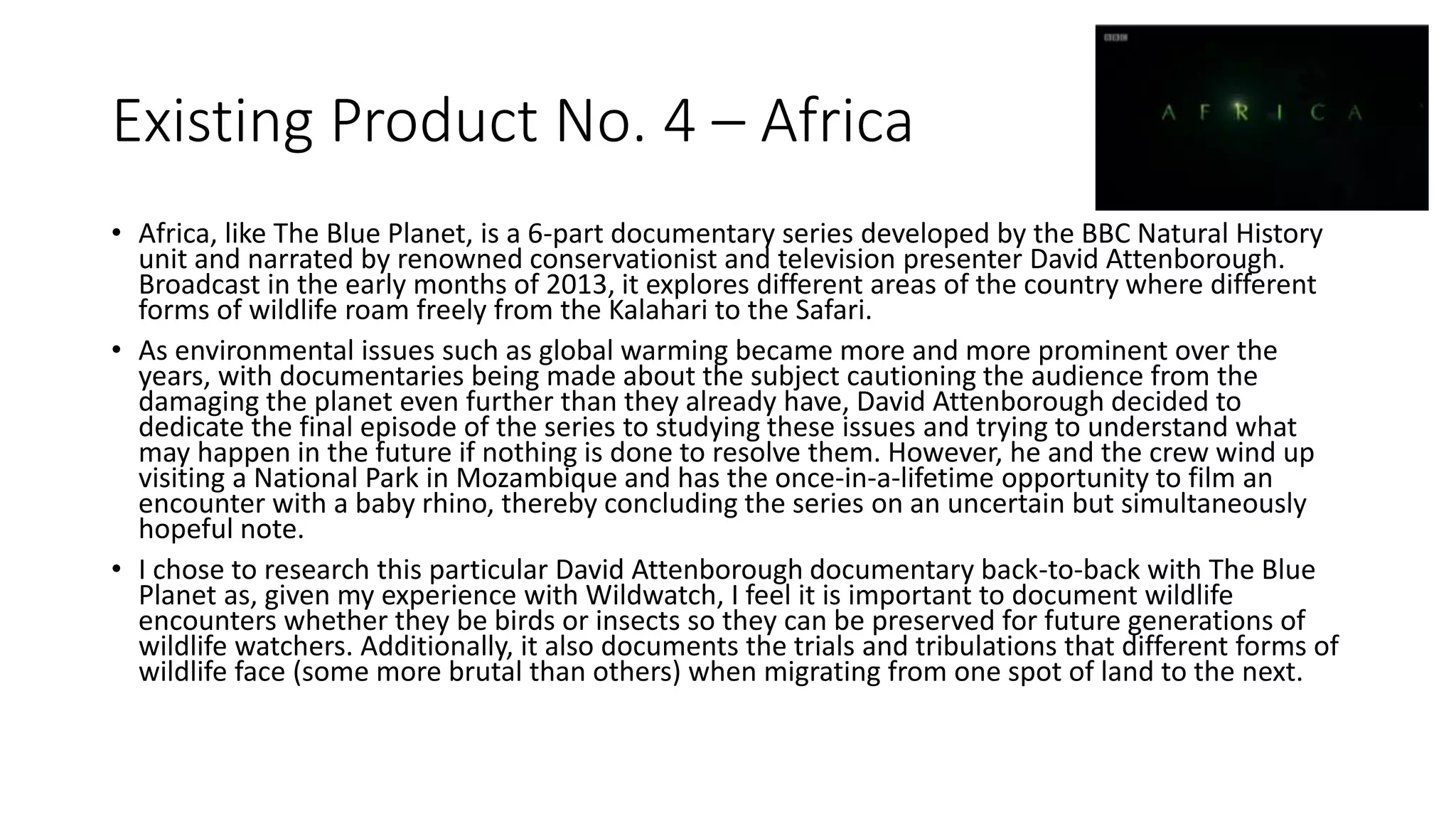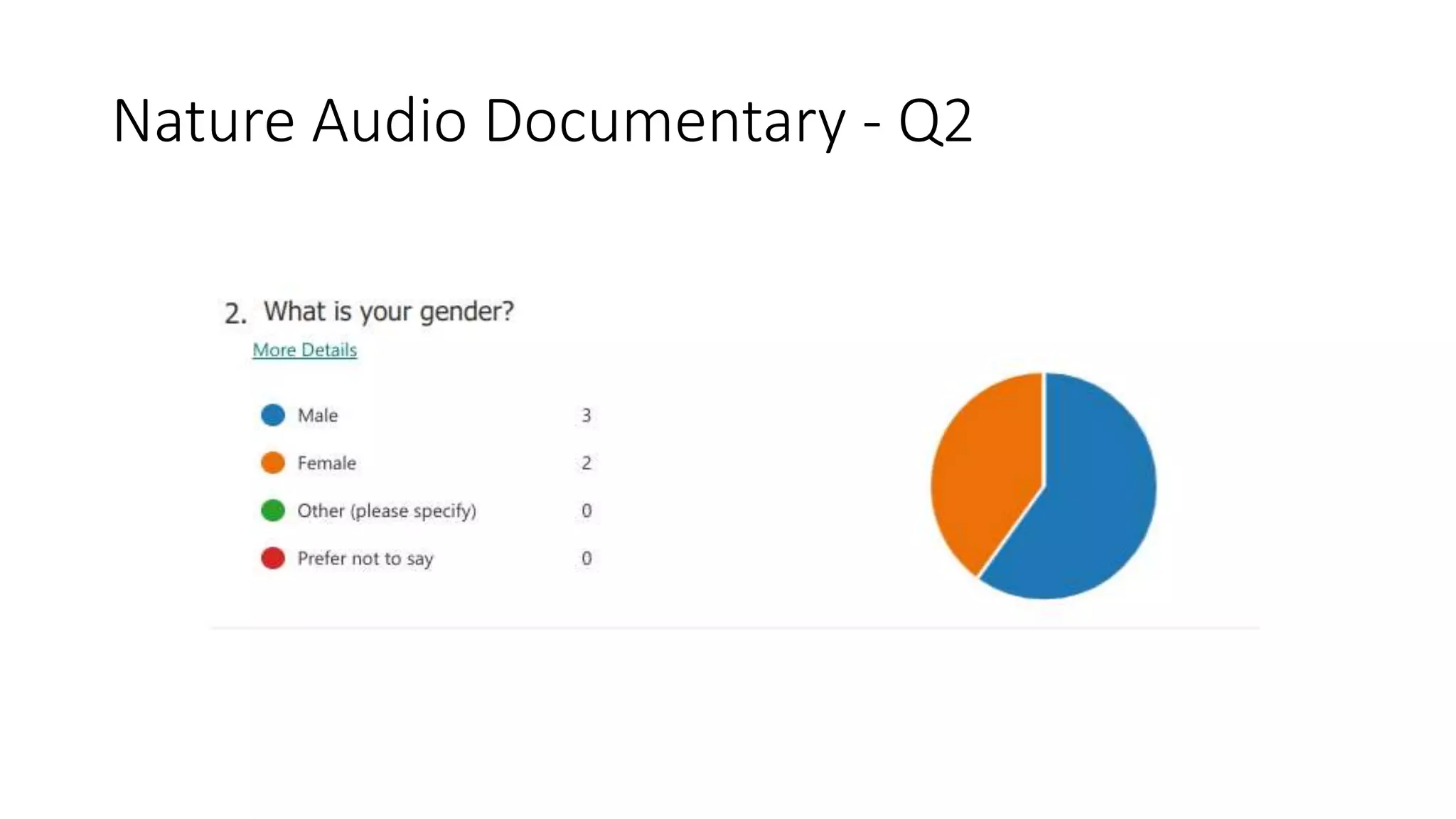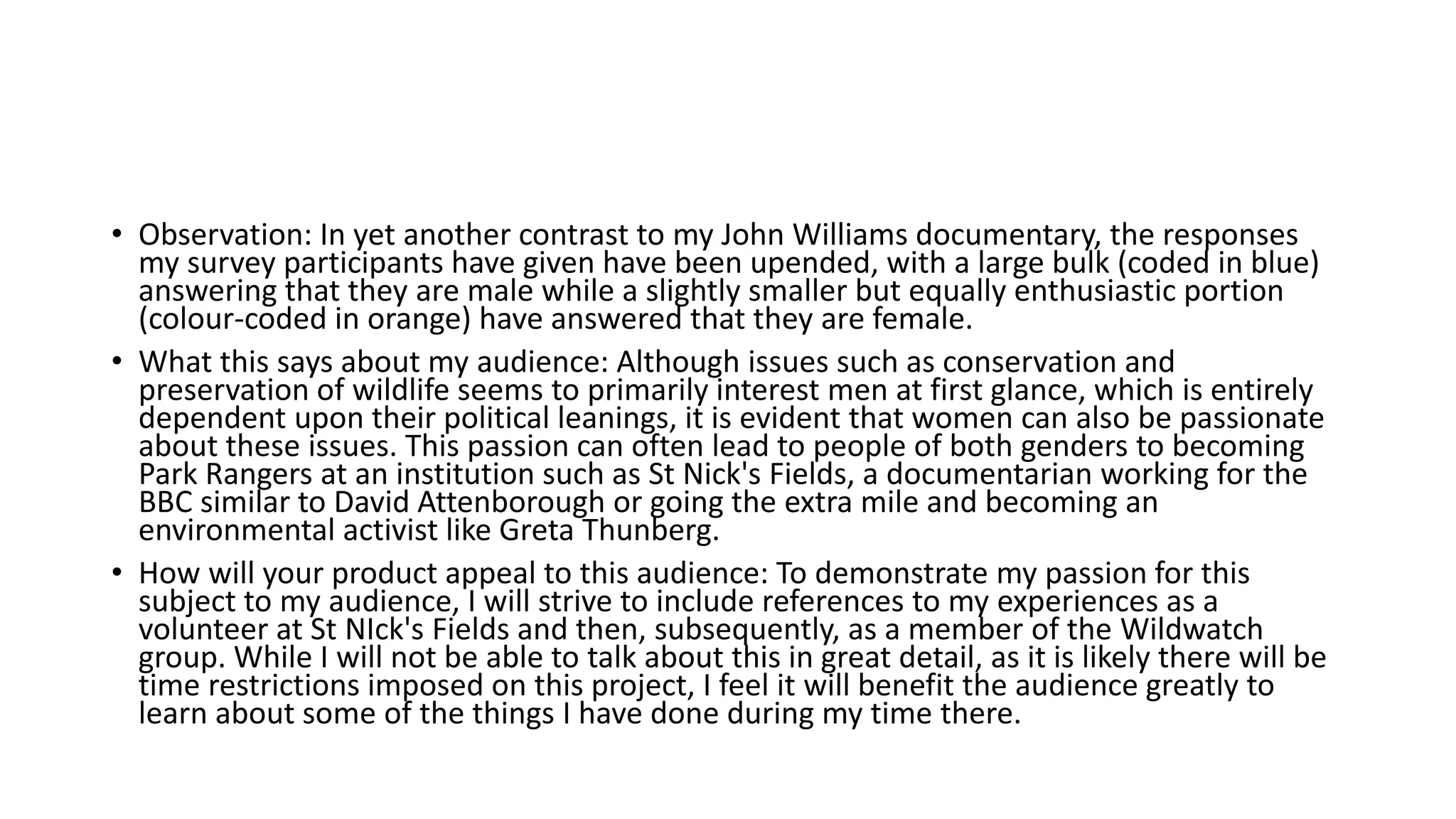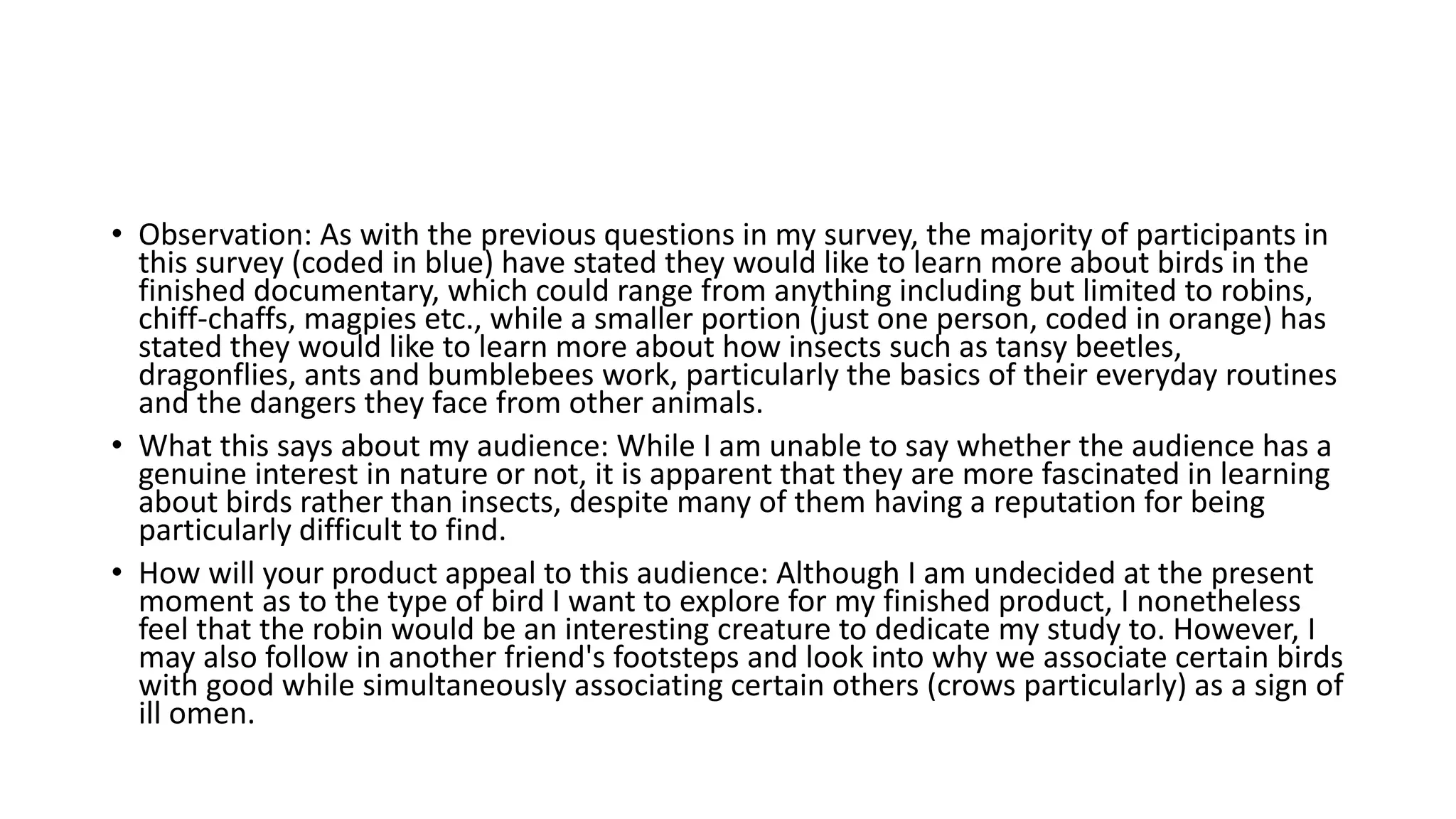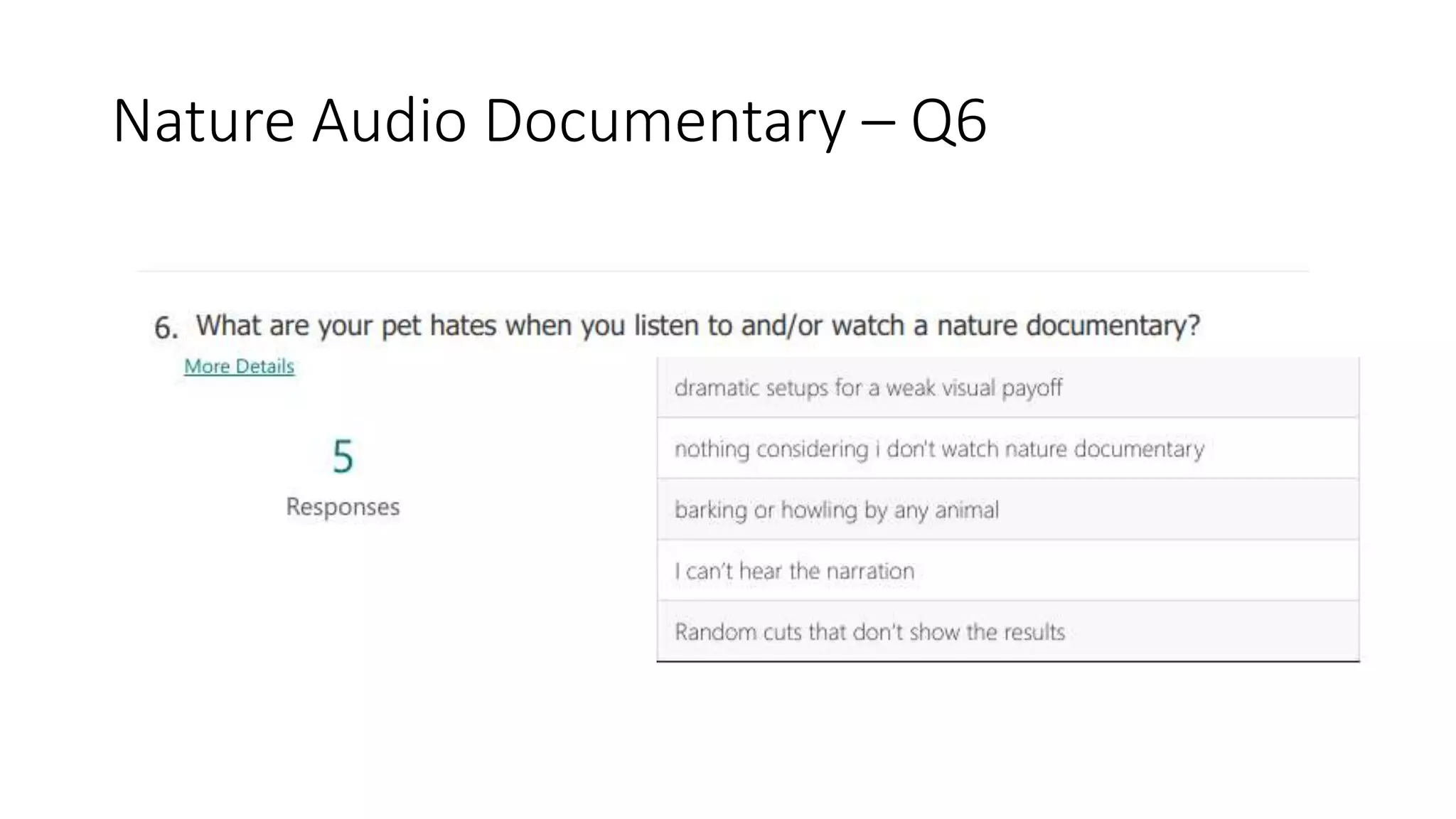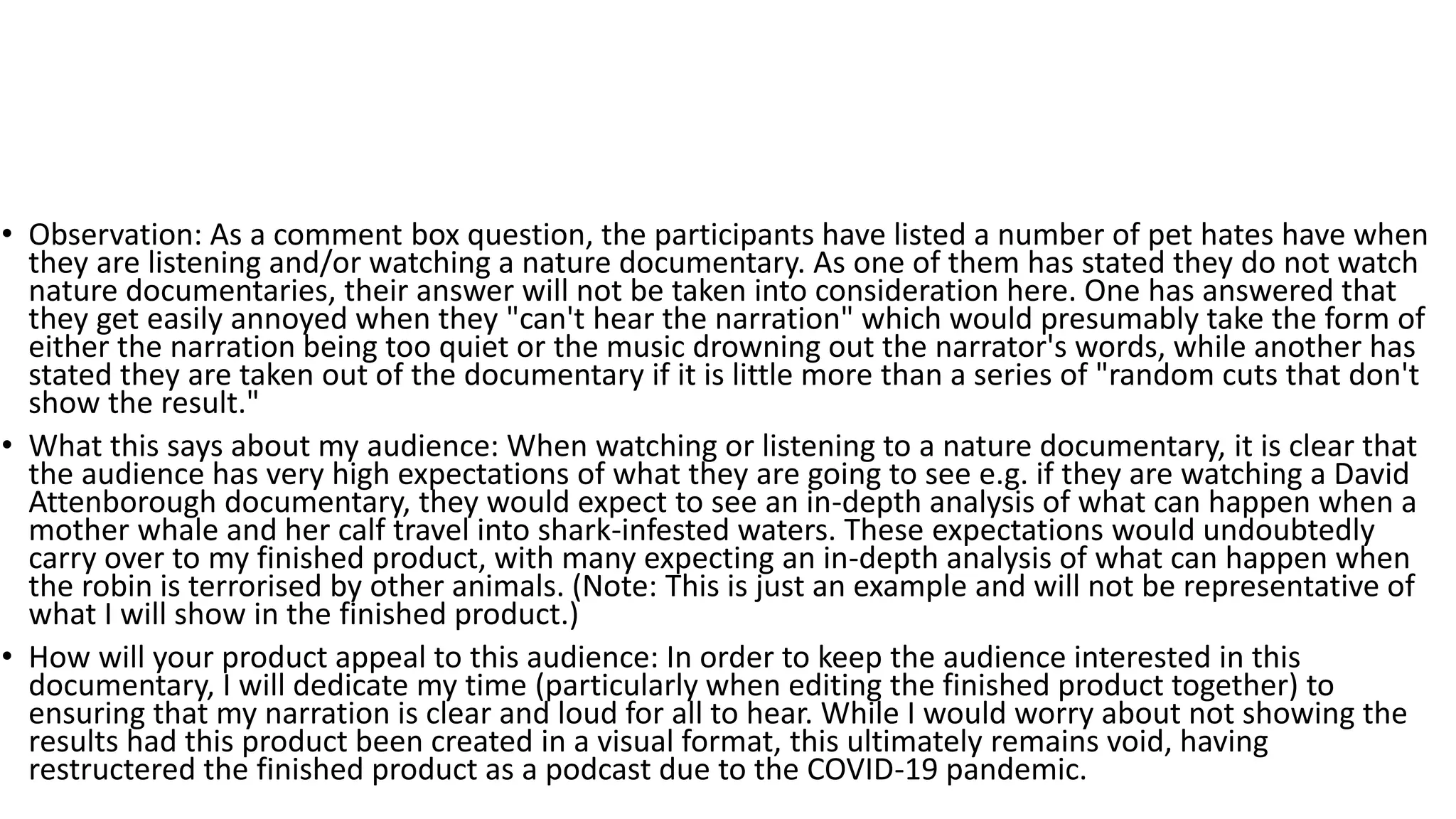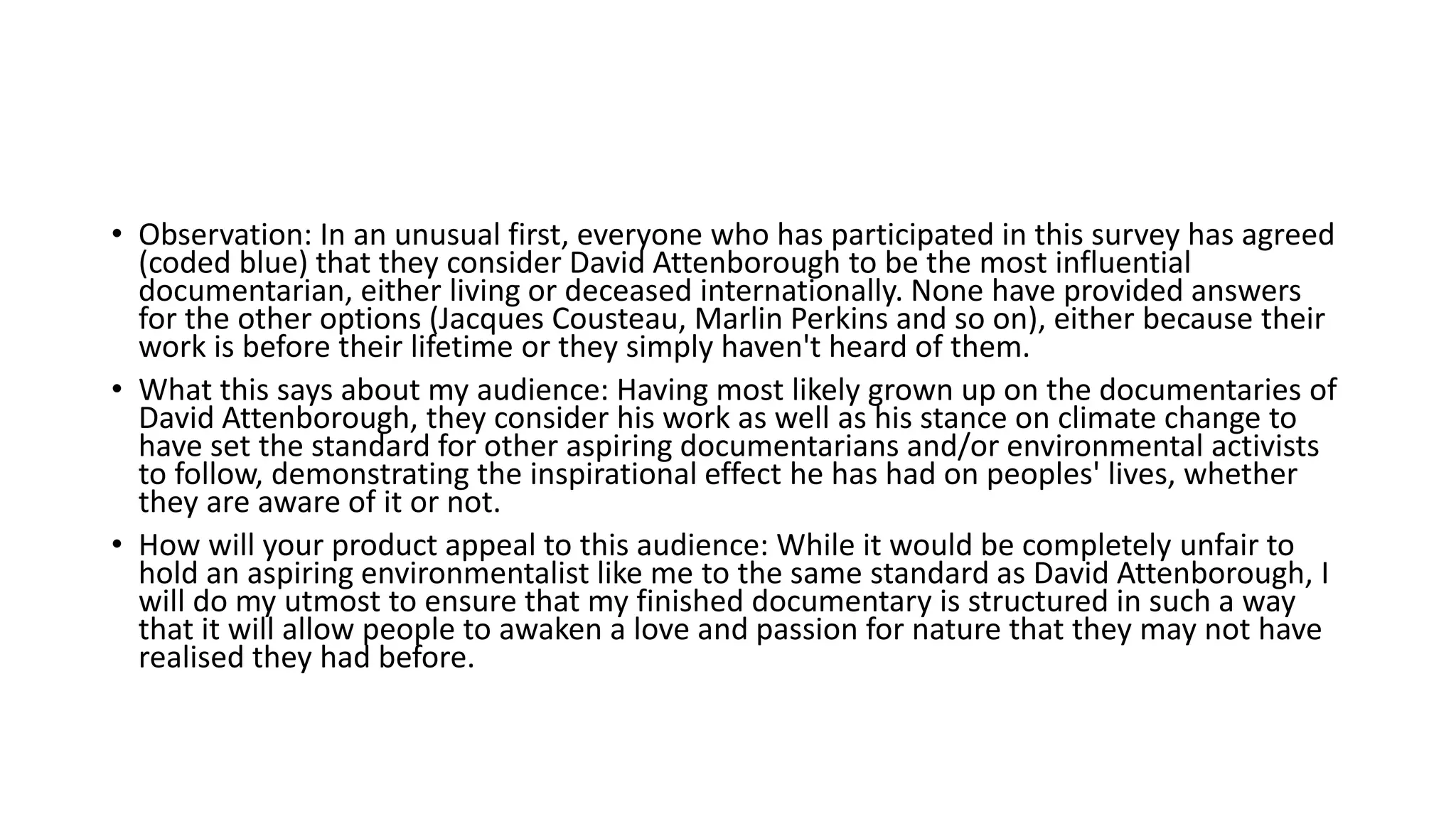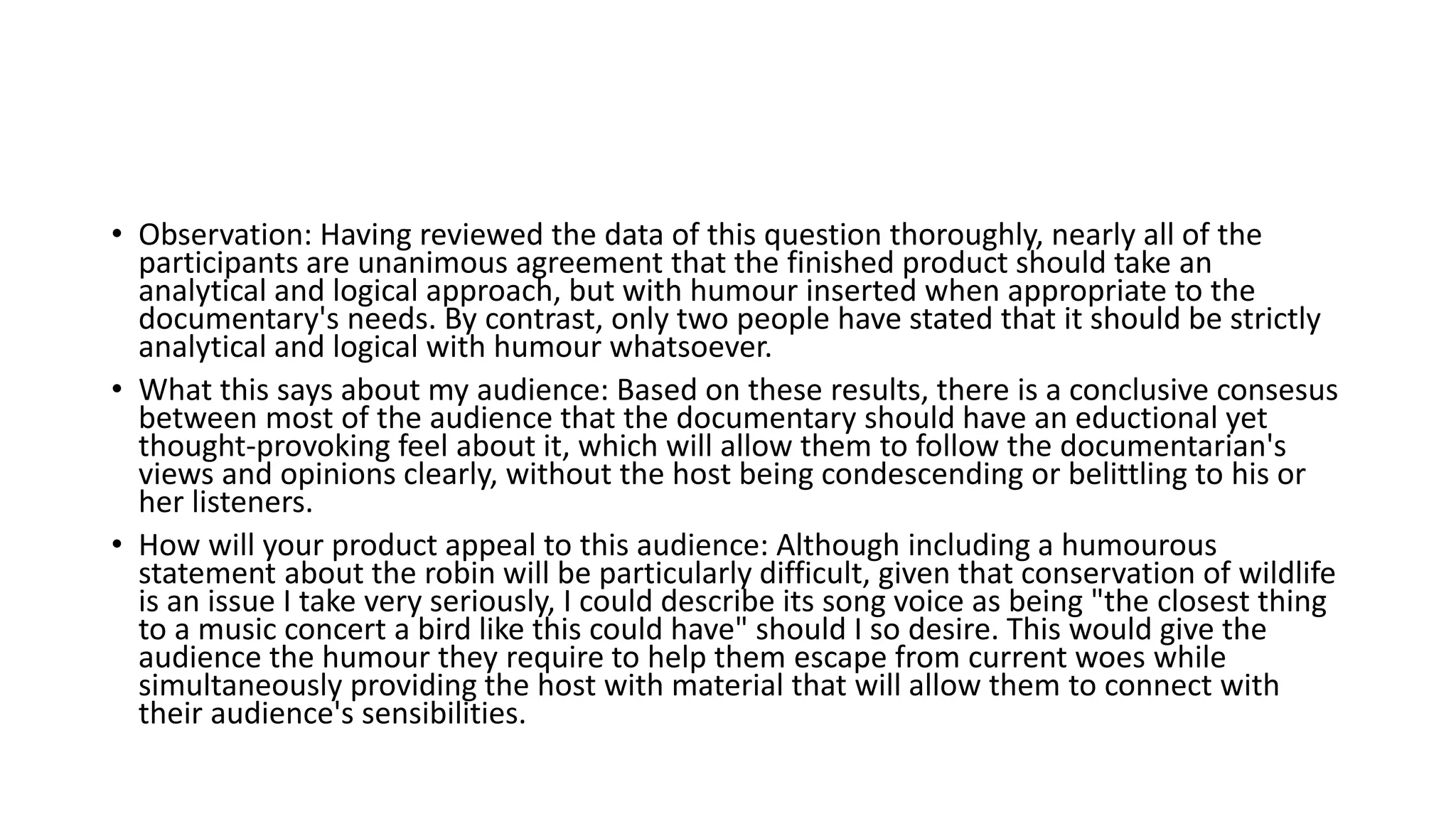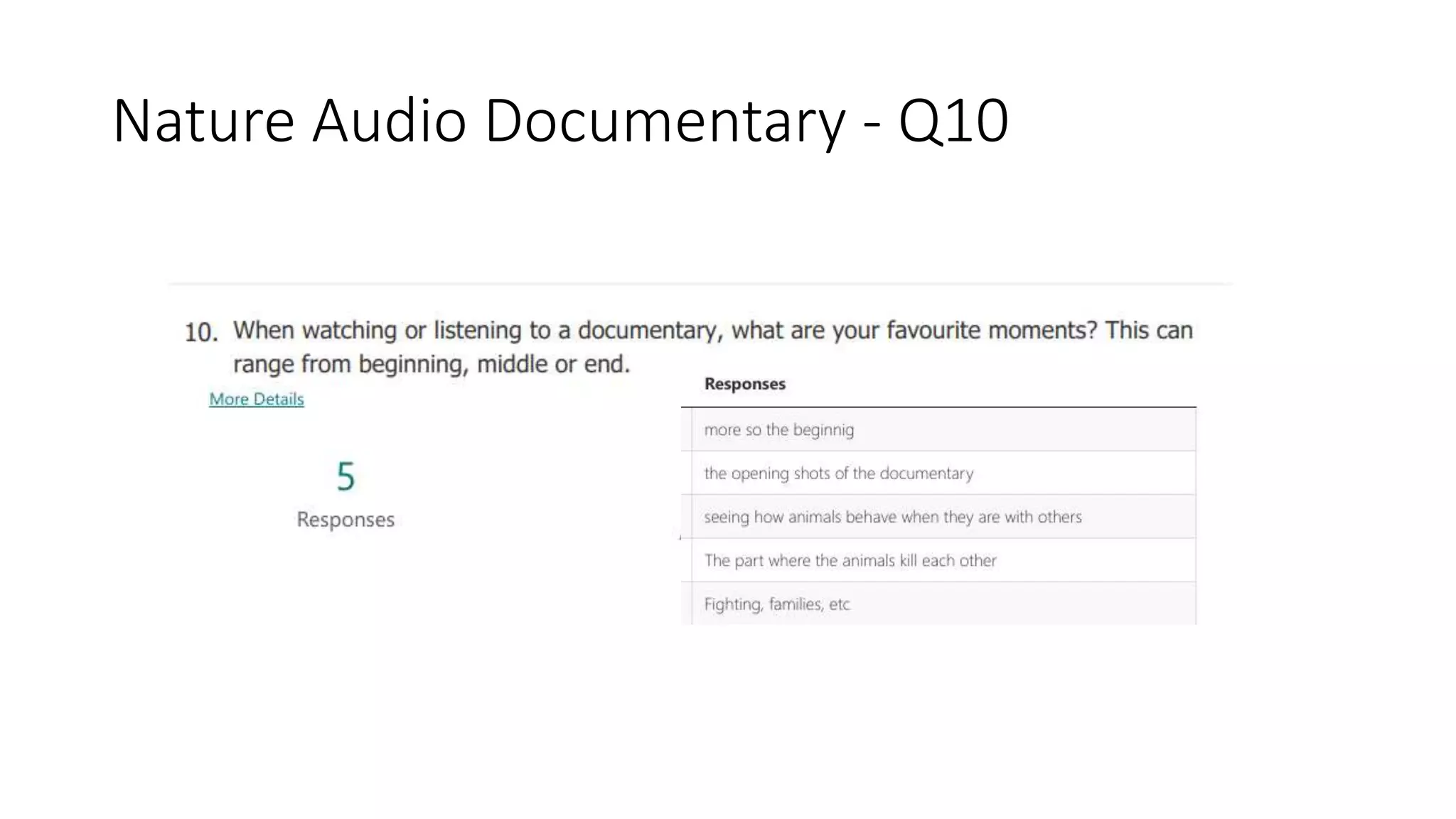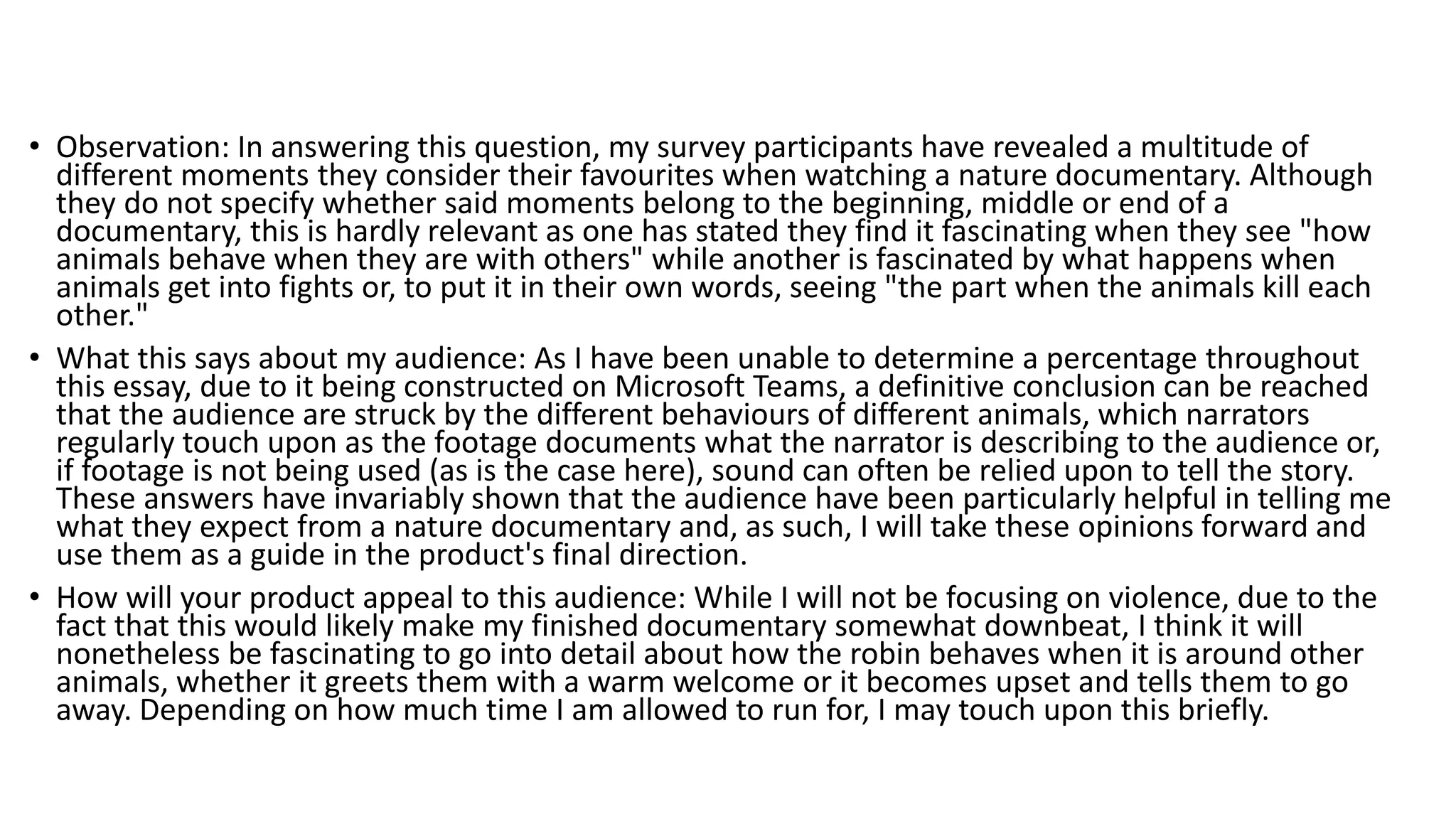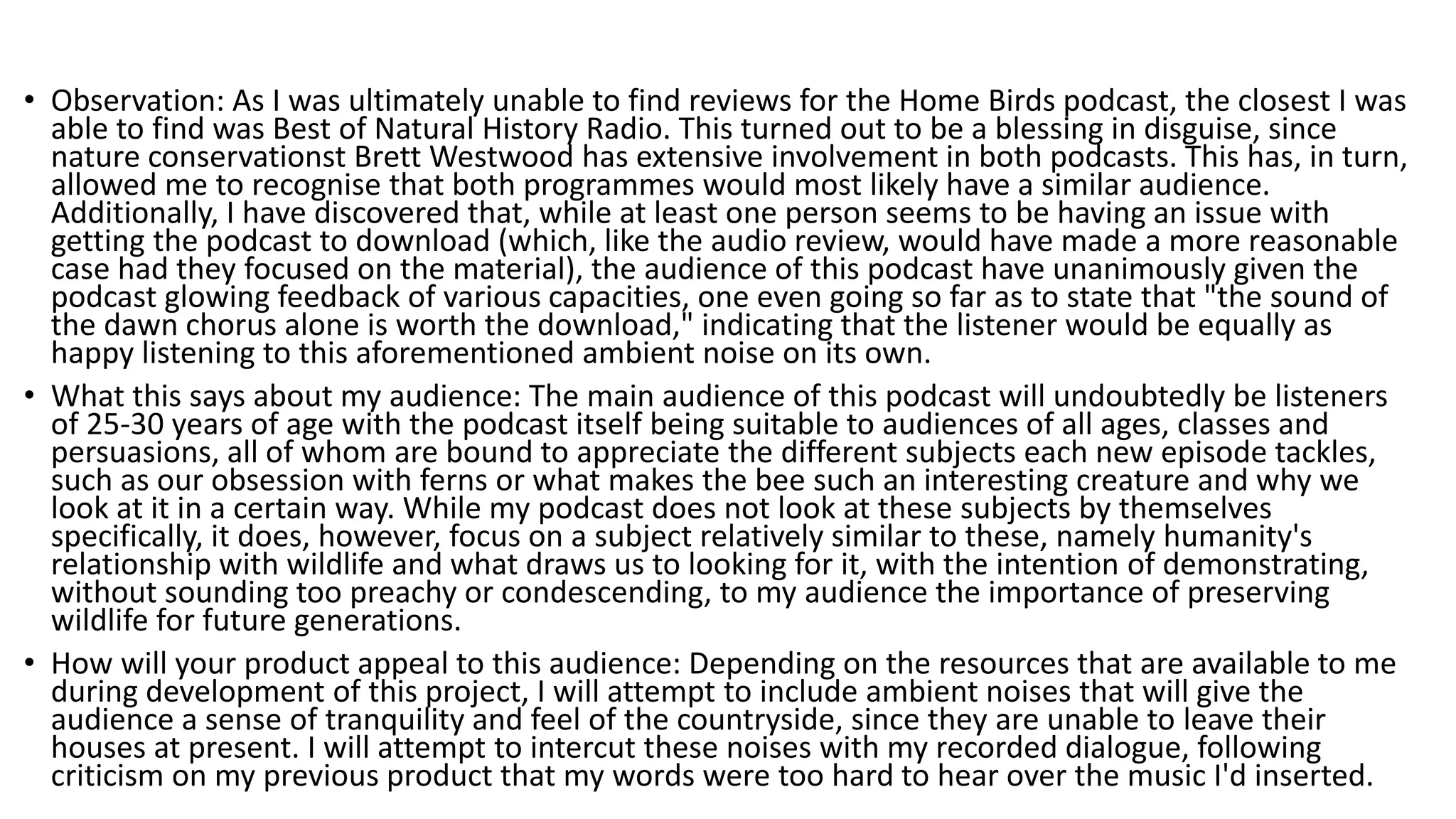The document discusses research into various audio podcasts and documentaries focusing on nature, particularly birds, as a foundation for a major project. It highlights the impact of the COVID-19 lockdown on these productions, the audiences' demographics based on surveys, and the creator's intention to inspire awareness about wildlife conservation through an audio documentary. Key insights include the fascination with birdsong, the significance of relatable content, and the importance of engaging storytelling to connect with the audience.





